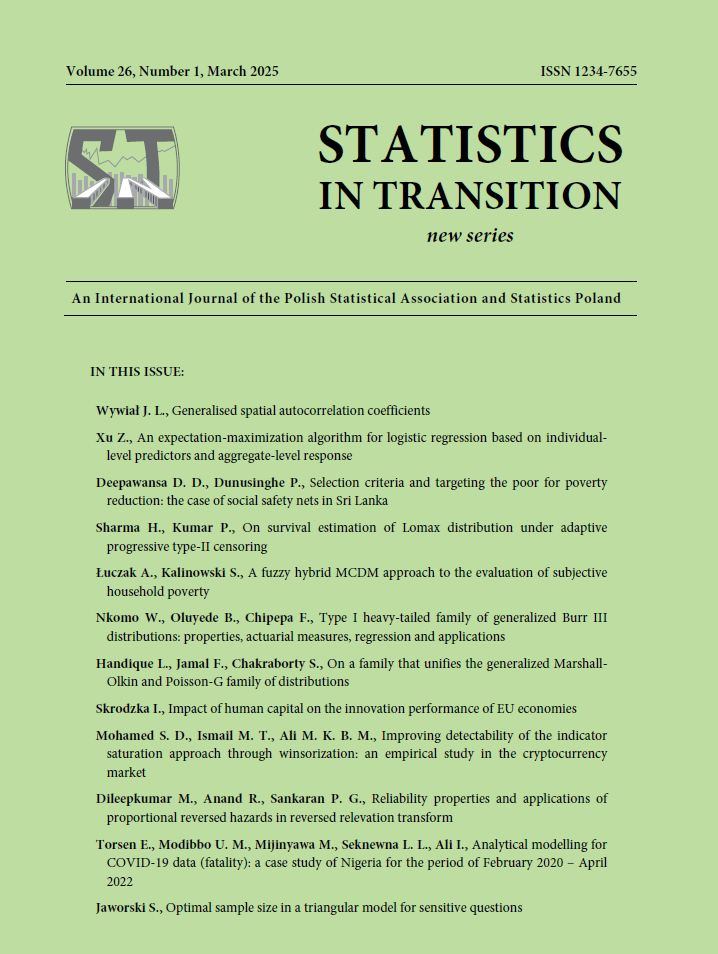ARTICLE
ABSTRACT
Reducing poverty and improving the living standards of the poor and vulnerable populations in Sri Lanka have been one of the country’s key goals. The government has designed poverty-targeting programs with relevant government agencies working to support low-income families. The programs include cash transfers, microfinancing and various community-based and livelihood development activities, including the “Aswasuma” program, which is the primary safety net initiative. Although safety net programs have been receiving significant financial support for decades, many people still remain excluded as a result of mistargeting, lack of transparency and poor beneficiary selection methods. To address these challenges, the selection criteria have to be redesigned to effectively target poverty. This article explores the Multidimensional Deprivation Score Test (MDST), which assesses the multiple dimensions of household deprivation by weighting each deprivation through a data-driven approach. This methodology aims to identify the poorest and most vulnerable people more accurately. Using the data collected during the 2019 Household Income and Expenditure Survey, conducted by the Department of Census and Statistics, the MDST has improved targeting accuracy and thus the impact of social protection programs. It is therefore crucial to increase the efficiency of data collection and to compile the weighted deprivation score. Moreover, incorporating a community-level evaluation and regular monitoring is essential for maximizing the accuracy and effectiveness of targeting poverty.
KEYWORDS
poverty, social safety net, selection criteria.
REFERENCES
Alatas, V., Banerjee, A., Hanna, R., Olken, B. A., and Tobias, J., (2012). Targeting the poor: evidence from a field experiment in Indonesia. American Economic Review, 102(4), pp. 1206–1240.
Alkire, S. K., (2023). Moderate multidimensional poverty index: paving the way out of poverty. Social Indicators Research, 168(1), pp. 409–445.
Alkire, S., Seth, S., (2013). Selecting a targeting method to identify BPL households in India. Social indicators research, 112, pp. 417–446.
Alkire, S., Roche, J. M., Ballon, P., Foster, J., Santos, M. E. and Seth, S., (2015). Multidimensional poverty measurement and analysis. Oxford University Press, USA.
Beuermann, D. W., Hoffmann, B., Stampini, M., Vargas, D. and Cossío, D. A., (2024). Shooting a moving target: Choosing targeting tools for social programs. IDB Working Paper Series, No. IDB-WP-1559.
Bird, N., Hanedar, E., (2023). Expanding and Improving Social Safety Nets Through Digitalization. International Monetary Fund.
Brown, C., Ravallion, M. and Van de Walle, D., (2018). A poor means test? Econometric targeting in Africa. Journal of Development Economics, 134, pp. 109–124.
Department of Census and Statistics, (2021b). Multidimensional Poverty in Sri Lanka- 2019. Department of Census and Statistics, Sri Lanka.
Department of Census and Statistics, (2023a, January). Retrieved from Department of Census and Statistics: www.statistics.gov.lk/NationalAccounts/StaticalInformation/Reports/press_note_2022q3_en.
Department of Census and Statistics, (2021a). Poverty Indicators-2019.
Department of Census and Statistics, (2023b, February). Retrieved from www.statistics.gov.lk/InflationAndPrices/StaticalInformation/MonthlyCCPI/Inflation-FoodAndNonFoodGroups.
Devereux, S., Masset, E., Sabates-Wheeler, R., Samson, M., Rivas, A. M. and Te Lintelo, D., (2017). The targeting effectiveness of social transfers. Journal of Development Effectiveness, 9(2), pp. 162–211.
Diamond, A., Gill, M., Rebolledo Dellepiane, M. A., Skoufias, E., Vinha, K. and Xu, Y., (2016). Estimating poverty rates in target populations: An assessment of the simple poverty scorecard and alternative approaches. World Bank Policy Research Working Pape, 7393.
Grosh, M. E., (1994). Administering targeted social programs in Latin America: From platitudes to practice (Vol. 94). World Bank Publications..
Kidd, S., Wylde, E., (2011). Targeting the Poorest: An assessment of the proxy means test methodology. AusAID Research Paper.
Morestin, F., Grant, P. and Ridde, V., (2009). Criteria and processes for identifying the poor as beneficiaries of programs in developing countries. Policy brief. Montreal: University of Montreal.
Narayan, A., Yoshida, N., (2005). Proxy Means Tests for Targeting Welfare Benefits in Sri Lanka. South Asia Poverty Reduction and Economic Management.
Sabates-Wheeler, R., Hurrell, A. and Devereux, S., (2015). Targeting social transfer programmes: Comparing design and implementation errors across alternative mechanisms. Journal of International Development, 27(8), pp. 1521–1545.
Samaraweera, G. C., (2010). Economic and social assessment of poverty alleviation programs in Sri Lanka-special reference to the Gemidiriya community development and livelihood improvement project. Journal of Emerging Trends in Economics and Management Sciences, 1(1), pp. 60–65.
Sen, A., (1983). Poor, relatively speaking. Oxford economic papers, 35(2), pp. 153–169.
Sen, A., (1995). Inequality reexamined. Harvard university press.
Sen, A. K., (1997). From income inequality to economic inequality. Southern Economic Journal, 64(2), pp. 384-401.
Tilakaratna, G., Jayawardana, S., (2015). Social protection in Sri Lanka: current status and effect on labor market outcomes.
World Bank, (1999). Improving social assistance in Armenia. Human Development Unit, Country Department III, Europe and Central Asia Region, World Bank, Washington, DC.
